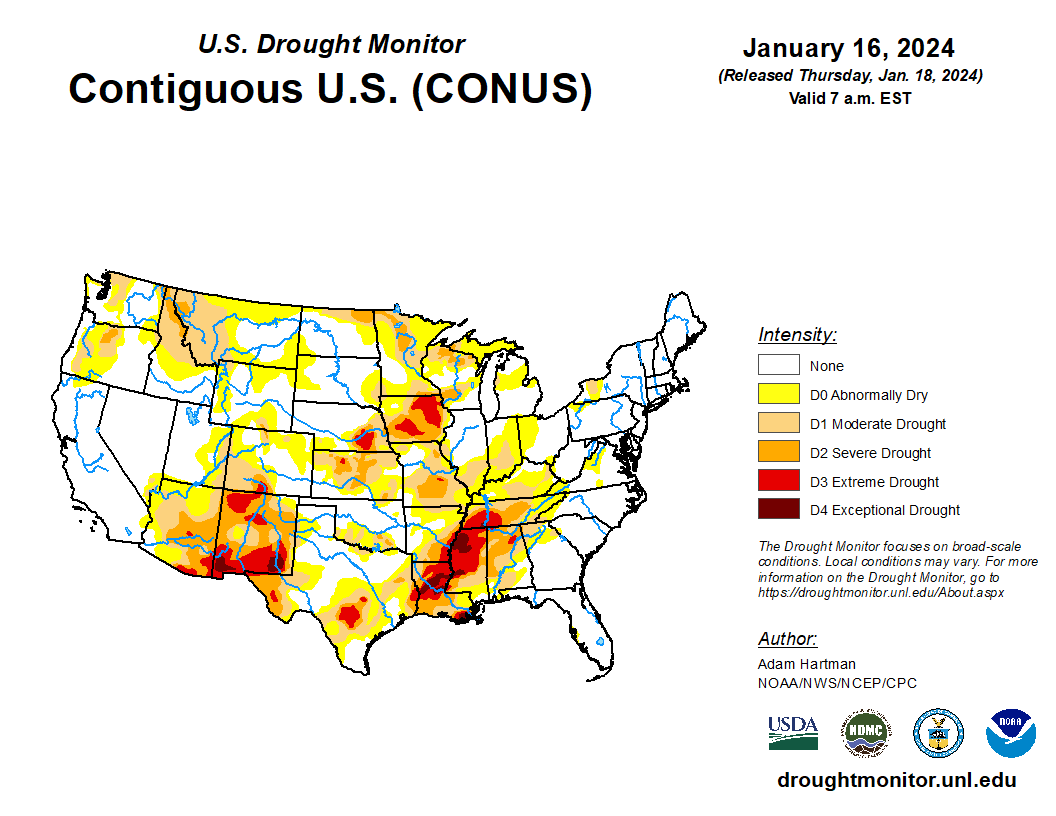U.S. Weather/Crop Progress
Highlights: ·
- In the Western U.S., widespread rain and snow showers cover most of the Pacific Northwest and Northern Mountain Region. The most significant snowfall affected the northern sections of the Rockies and the Cascades. Both areas have received below normal precipitation so far this winter. Further south, mild dry weather is providing favorable field conditions for winter agricultural regions in California and the Desert Southwest.
- In the Plains states, temperatures have begun to moderate after a recent cold snap but remain below normal. Snow cover persists in many winter wheat producing areas, providing needed insulation and moisture. Further north in Montana, protective snow cover has been lacking for most of the winter thus far.
- In the Corn Belt, the weather is cold, windy, and dry. Sub-zero temperatures with lower wind chills persist in nearly all parts of the Corn belt. Snow from last week still covers most of the Midwest. Some regions from Nebraska to Michigan received over a foot of snow making travel difficult.
- In the South, temperatures fell below freezing, most notably in winter agricultural regions like Florida and Southern Texas. Some temperatures below 0°F were reported in Kentucky and Tennessee.
Outlook: Precipitation has been moving across the U.S. This has already affected the Pacific Northwest and is expected in the Midwest and East regions of the U.S. later in the week. Unlike previous winter storms, precipitation is not expected to be heavy, although some disruptive amounts may occur in the northern regions of the U.S. Sub-zero temperatures are expected to linger through the weekend following the storm before milder conditions return to most parts of the U.S. This milder weather has already begun to show in the Western U.S.
The NWS 6- to 10-day outlook for January 22-26 calls for above-normal temperatures nationwide, with the Great Lakes region having the greatest likelihood of experiencing warmer-than-normal weather. Meanwhile, near- or above-normal precipitation across most of the country should contrast with drier than-normal conditions across much of the northern Plains.

